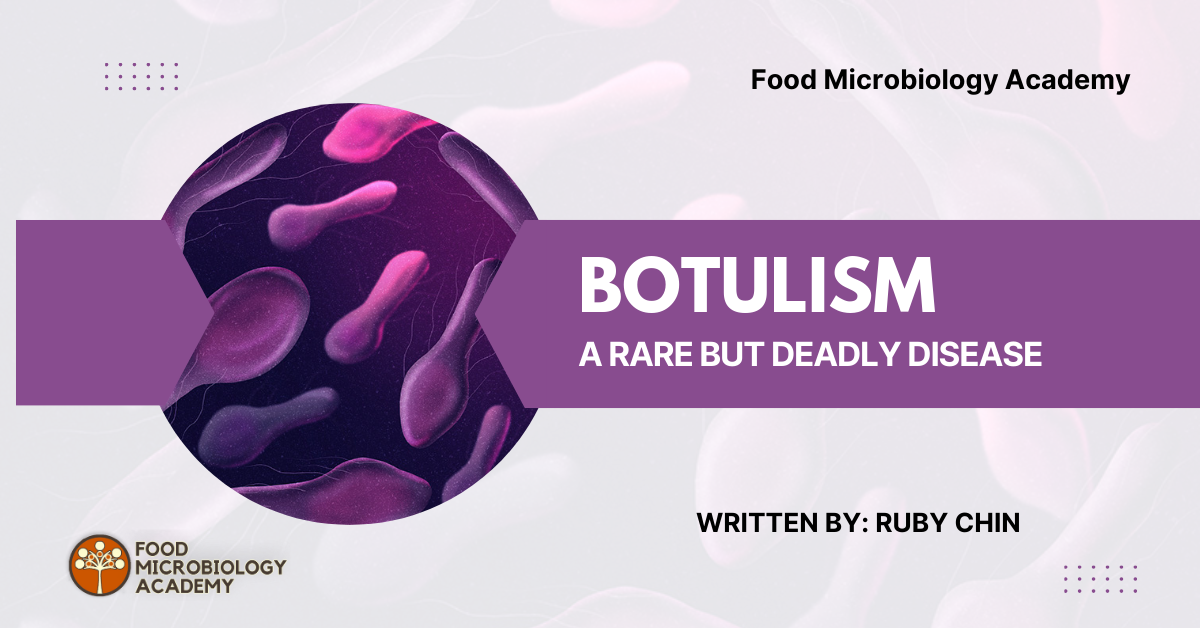Botulism is a rare but highly serious illness that can be fatal if not properly and promptly treated. This disease is caused by a neurotoxin that is produced by the Clostridium botulinum bacteria. There are three main types of botulism: foodborne botulism, wound botulism and infant botulism.
To prevent botulism, it is important to first understand the bacterium causing the disease. This article provides an overview on the bacterium Clostridiumbotulinum, the causes and symptoms of botulism, along with useful information on treatment and prevention strategies.
The Clostridium botulinum bacteria
Clostridium botulinum is a Gram positive bacterium that has a rod shaped (bacillus) cell morphology. It is a type of anaerobic bacteria that can undergo sporulation and also has the ability to produce a type of neurotoxin known as the botulinum toxin. This botulinum toxin is typically produced by Clostridium botulinum during low oxygen conditions and released into their environment.
Causes and Transmission of botulism
As mentioned previously, anaerobic conditions trigger Clostridium botulinum to produce the botulinum neurotoxin. This neurotoxin is the main cause for the onset of symptoms seen in a person infected with the bacteria.
Transmission routes vary depending on the specific type of botulism. For example, ingestion of contaminated foods, such as improperly canned foods, can cause a person to become infected with the bacteria and they may then go on to infect others around them. It can also be spread through wound contamination or ingestion of spores by an infant.
Some commonly used methods to diagnose botulism include clinical evaluation, along with detection of the botulinum toxin in serum or stool samples.
Symptoms of Botulism
There are multiple symptoms of botulism that can be observed in an infected person. These may include blurred or reduced vision, difficulty in swallowing and speech, along with muscle weakness. Paralysis may also occur in more severe cases of botulism.
The onset of botulism also depends on the type of botulism. Notably, it should be highlighted that foodborne botulism infections normally have a more rapid onset. The reason for this is due to the ingestion of botulinum toxins that are already previously produced and secreted by the bacterium. This can be compared with infant and wound botulism, which have a more gradual onset. This is because they are a result of the ingestion or contamination of bacterial spores, which require time to germinate before producing the toxins locally, either within the gastrointestinal tract or the infected wound area.
Treatment for botulism
Treatment approaches are currently available, but they typically require early detection and diagnosis. An example of an effective treatment that may be used to target botulism is the administration of botulism antitoxins. These are helpful as they mainly act to neutralise circulating toxins in the body of an infected person. A range of supportive care measures can also be taken for more severe cases of botulism, such as providing respiratory support and feeding assistance to infected patients.
Prevention strategies against botulism
One of the major preventive measures for botulism is ensuring proper home canning techniques for different foods. This is especially the case to prevent foodborne botulism. As for wound botulism, it is important to practise appropriate wound cleaning and care following injuries. Another lesser known, but highly important measure to prevent botulism in infants is to avoid feeding infants that are under one year of age with honey. The main reason for this is because the bacterium Clostridium botulinum may be found in honey and related food products.
Furthermore, general public health measures such as active surveillance, prompt investigation of botulism outbreaks, and proper education on safe food handling practices are also highly crucial in order to prevent future botulism outbreaks within a community or population.
Conclusion
There is much ongoing research efforts that are being done on Cholera and the bacterium Clostridium botulinum. These include the development of more effective vaccine treatments and other antitoxins to specifically target Clostridium botulinum.
As this is a potentially fatal disease that can be prevented, it is paramount to have a good understanding of the bacteria that is involved in this disease. This article hopes to reinforce the public’s awareness on this disease, along with highlighting the importance of making necessary interventions and taking preventive measures against it in order to stop the spread of botulism disease.



